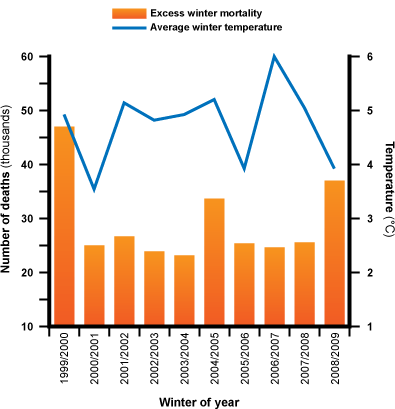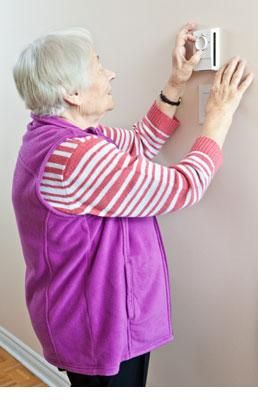This topic takes on average 55 minutes to read.
There are a number of interactive features in this resource:
 Biology
Biology
 Human biology
Human biology
 Physical education
Physical education
The homeostatic mechanisms for controlling the body temperature work very well - but sometimes conditions are just too tough and they cannot cope. If your core temperature falls too low this is called hypothermia. When the core body temperature begins to fall, the first signs are extreme tiredness and lethargy - you cannot be bothered to move. People often do not even realise how cold they are getting. The skin of someone with hypothermia feels very cold to the touch and their face may become puffy and grey with blue lips. As people become colder they become more and more drowsy and their speech may become slurred. Shivering stops as enzymes stop working. Eventually people can become unconscious and die from hypothermia.
Very young babies, people outside in severe weather and the very old are particularly at risk of hypothermia. In the UK alone about 30,000 people die each year of hypothermia.


It isn't only getting too cold that is potentially damaging or even fatal. If the core body temperature goes too high either as a result of a fever, excessive exercise or weather conditions, the enzymes denature and the cells of the body die. This in turn quickly causes death. This is hyperthermia.
If sweating is excessive, too much salt can be lost from the body upsetting the ion balance in the blood, which can lead to cramps.
In very hot environments, excessive sweating (up to two pints in an hour) can also lead to dehydration. When the body is dehydrated, less sweat is produced, as the body tries to hold on to water. But without sweating, the body temperature stays too high. If this happens, the normal mechanisms for temperature control stop working as the enzymes denature. It is important to drink enough water so that this situation does not develop. This type of heatstroke is particularly common when people exercise hard in very hot weather
It is very important if someone is suffering from hyperthermia to bring down their temperature as quickly as possible eg by using cool water on the surface of the body or immersing them in a cool bath and by making sure the person is well hydrated and is given plenty of salt and other electrolytes.
It is possible to acclimatise the body over a period of several weeks to hotter conditions. Acclimatisation results in the progressive decrease in salt concentration of sweat, while the volume of sweat increases. This has the advantage of not losing too much salt from the body, and, as long as water intake is adequate, dehydration does not occur. Athletes who normally live in temperate climates can prepare themselves for sporting events in hot countries by living and training in hot conditions for several weeks before the event. In this way they can maintain their usual standards while performing in the hot climate.